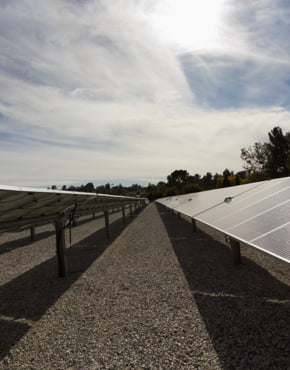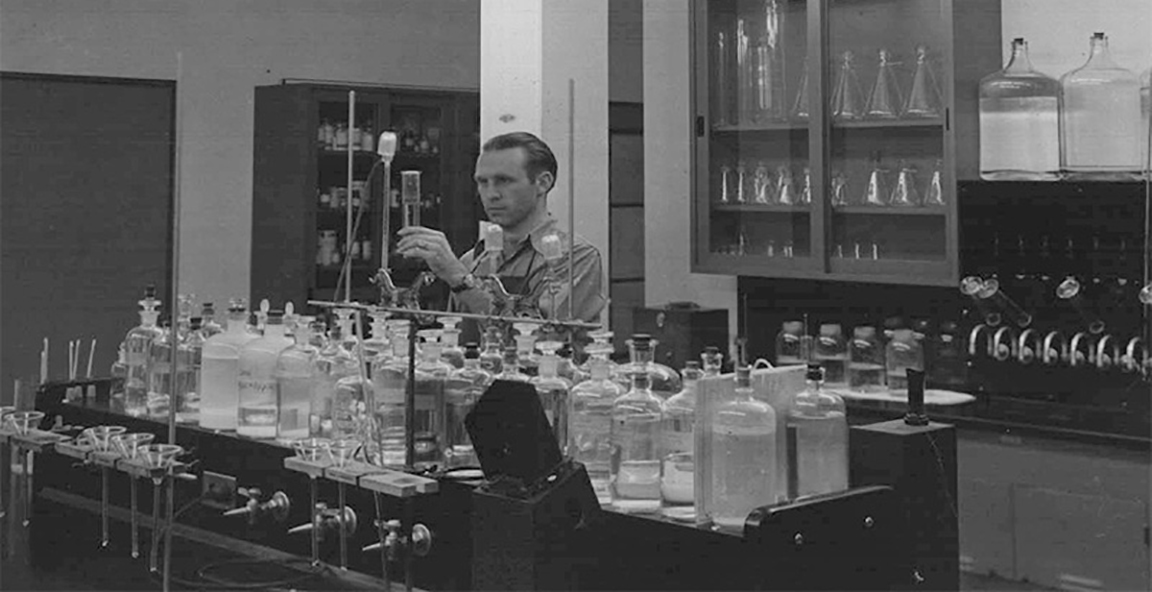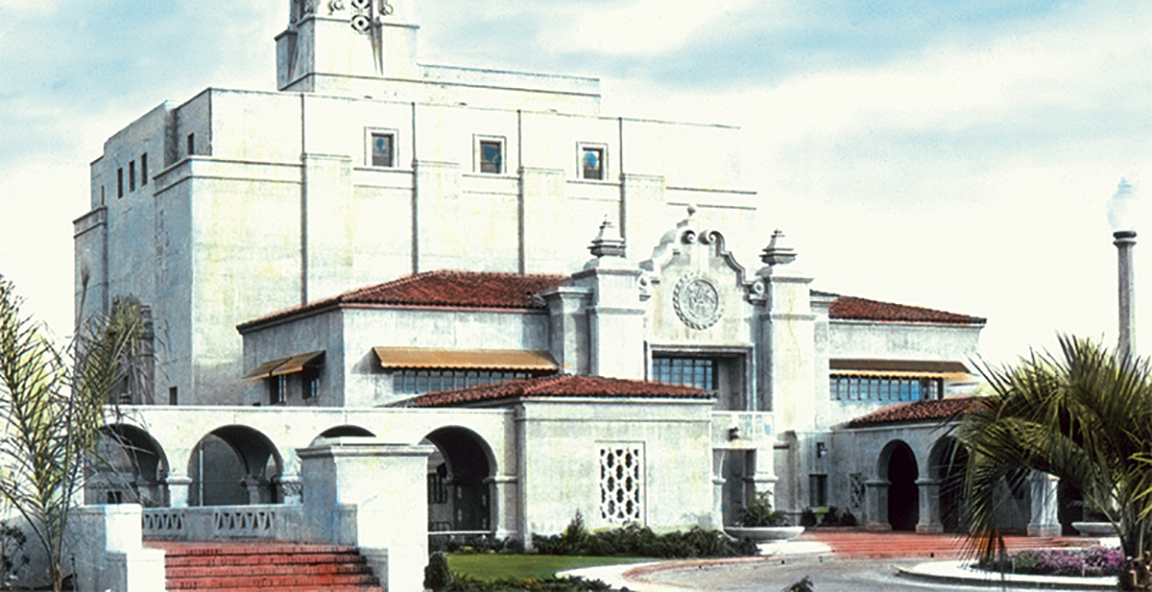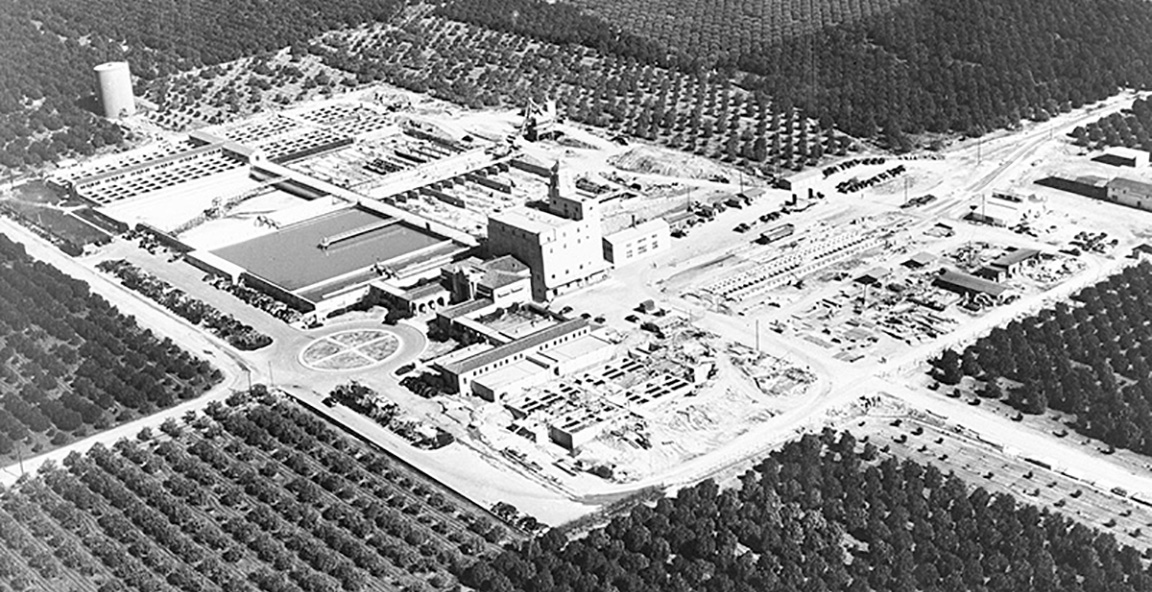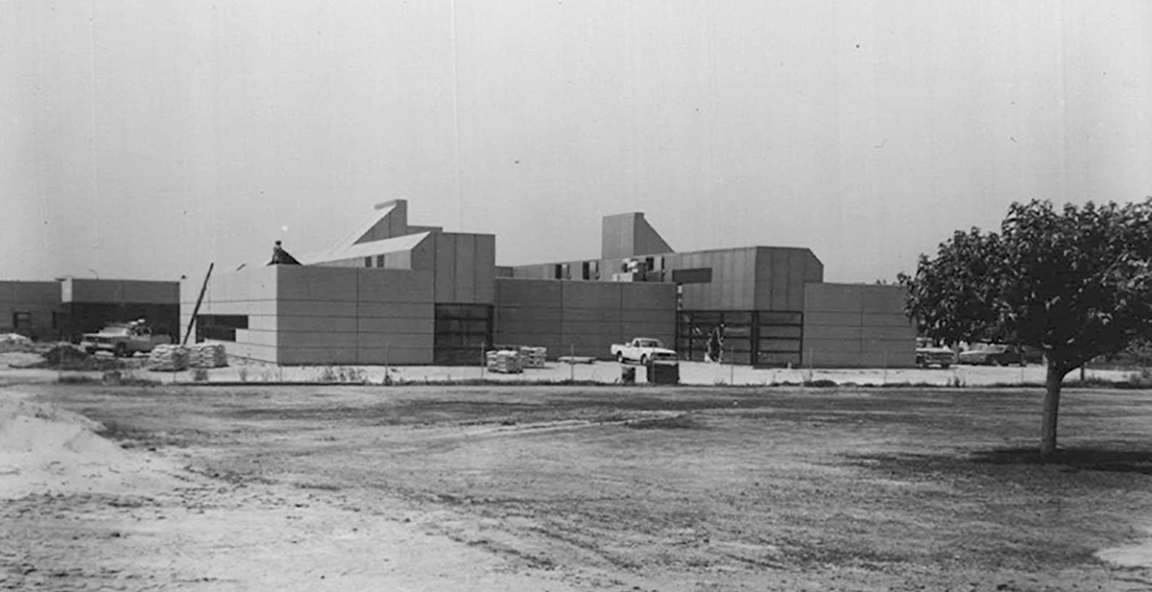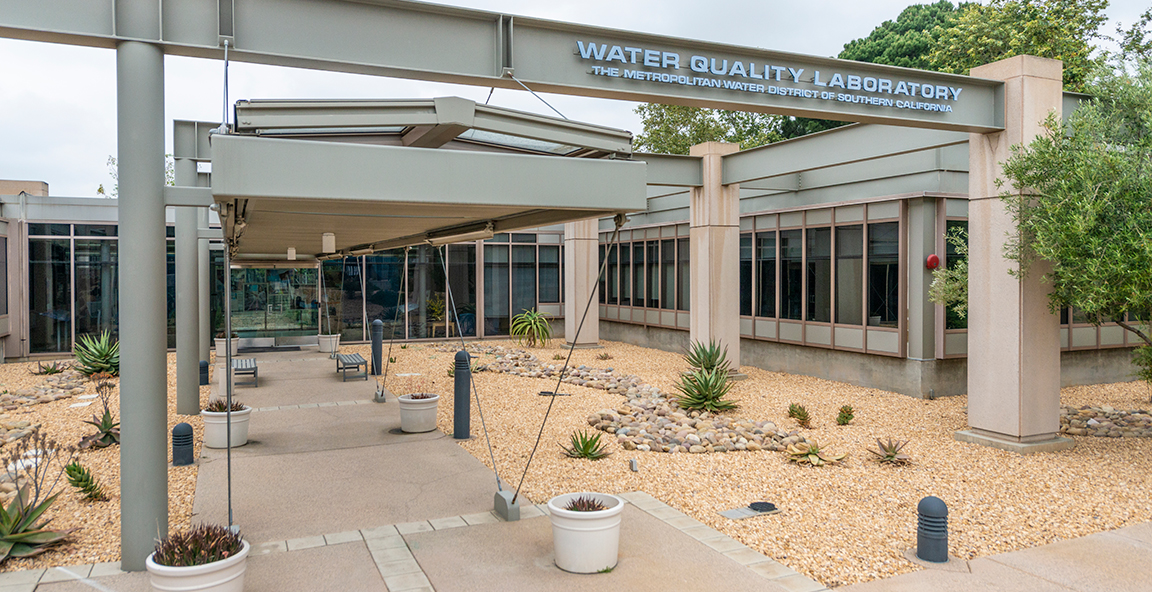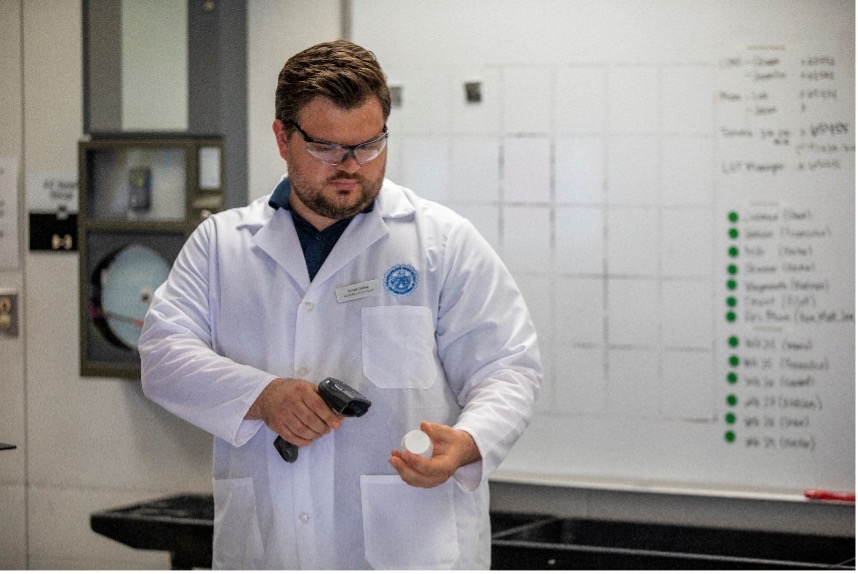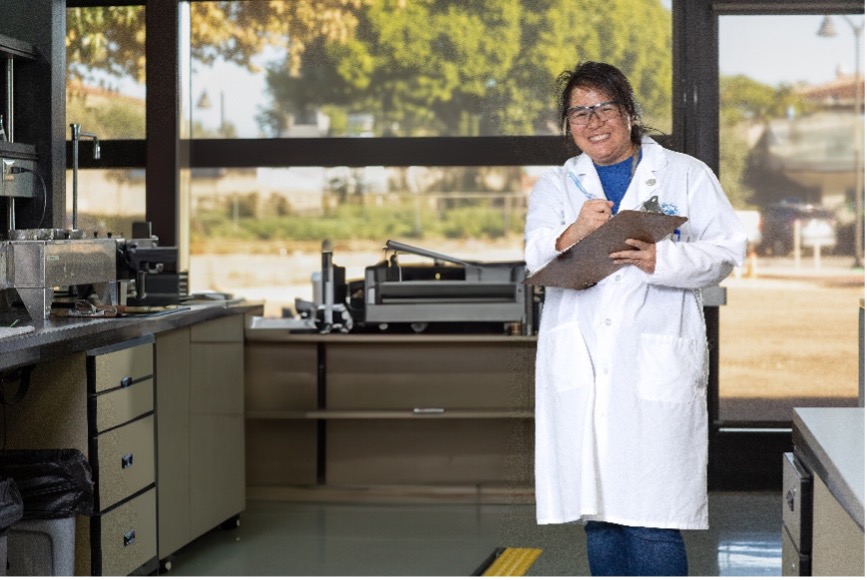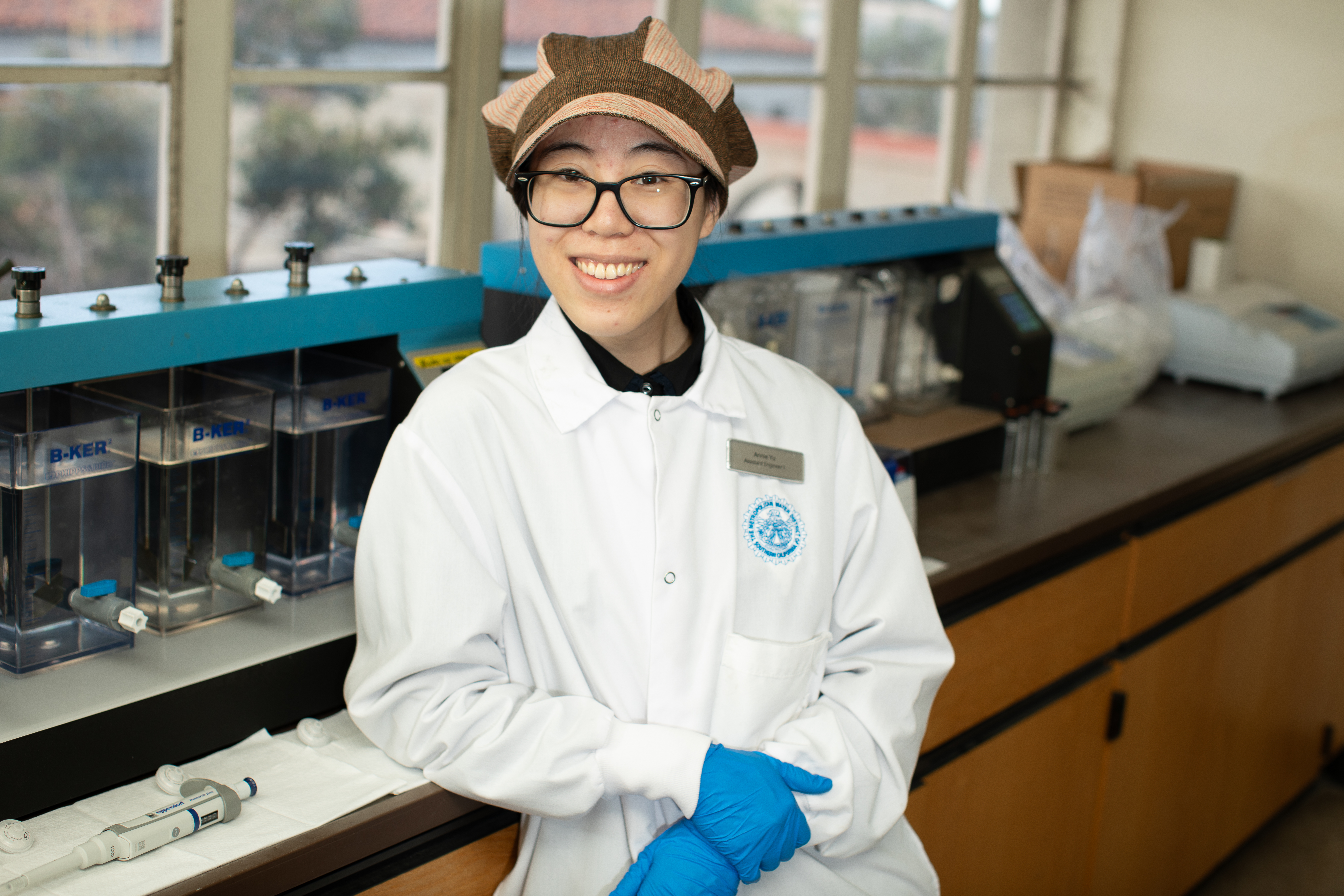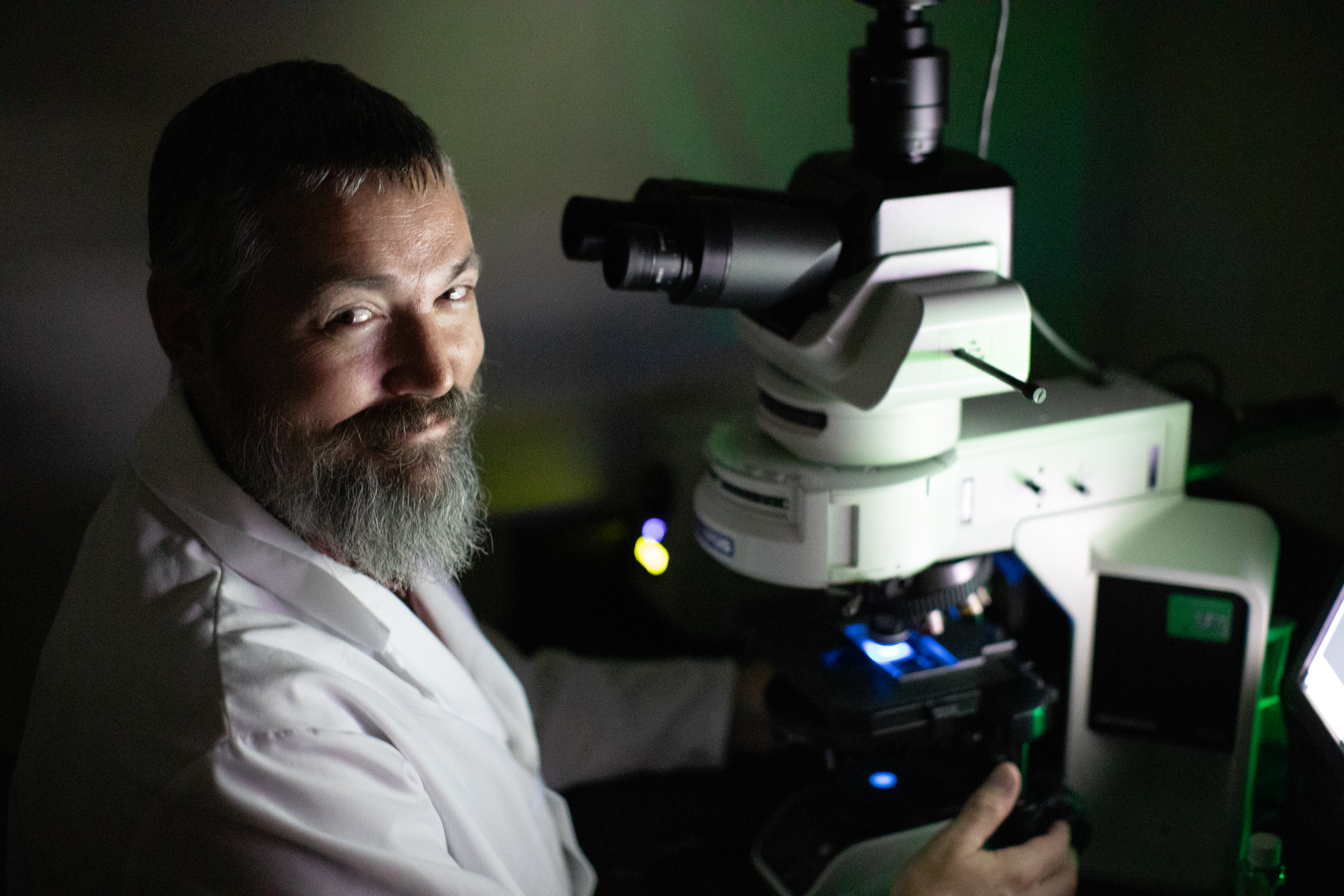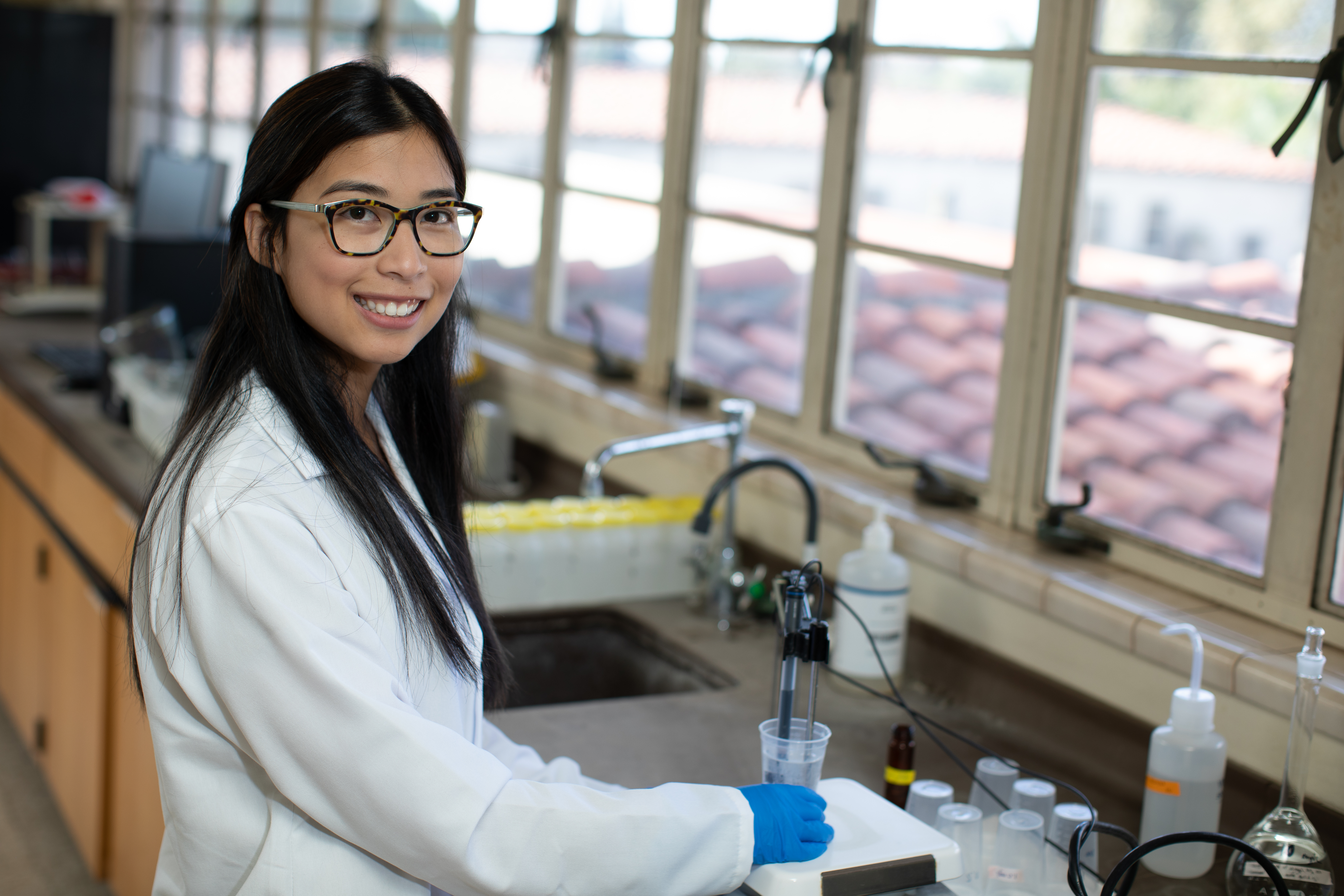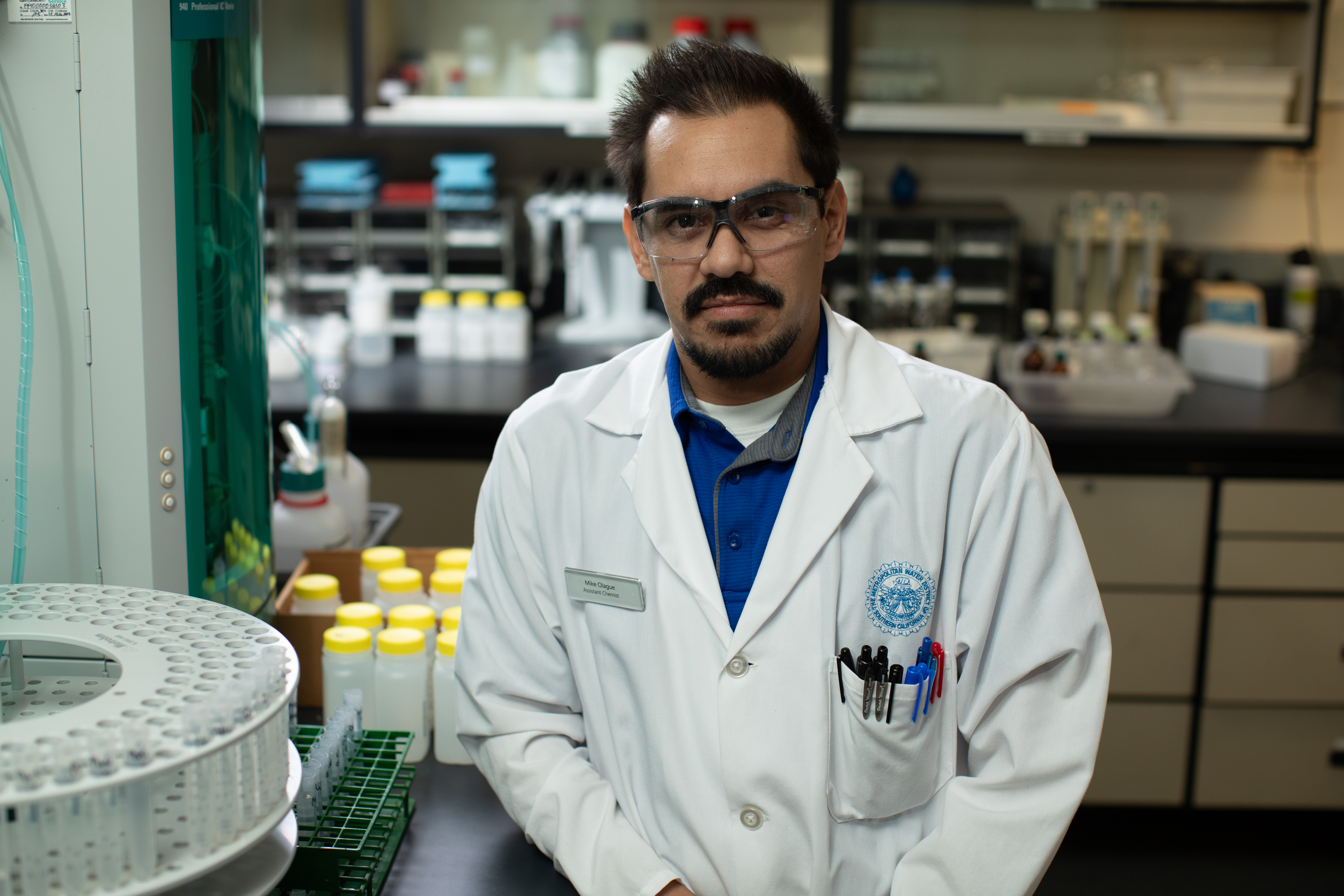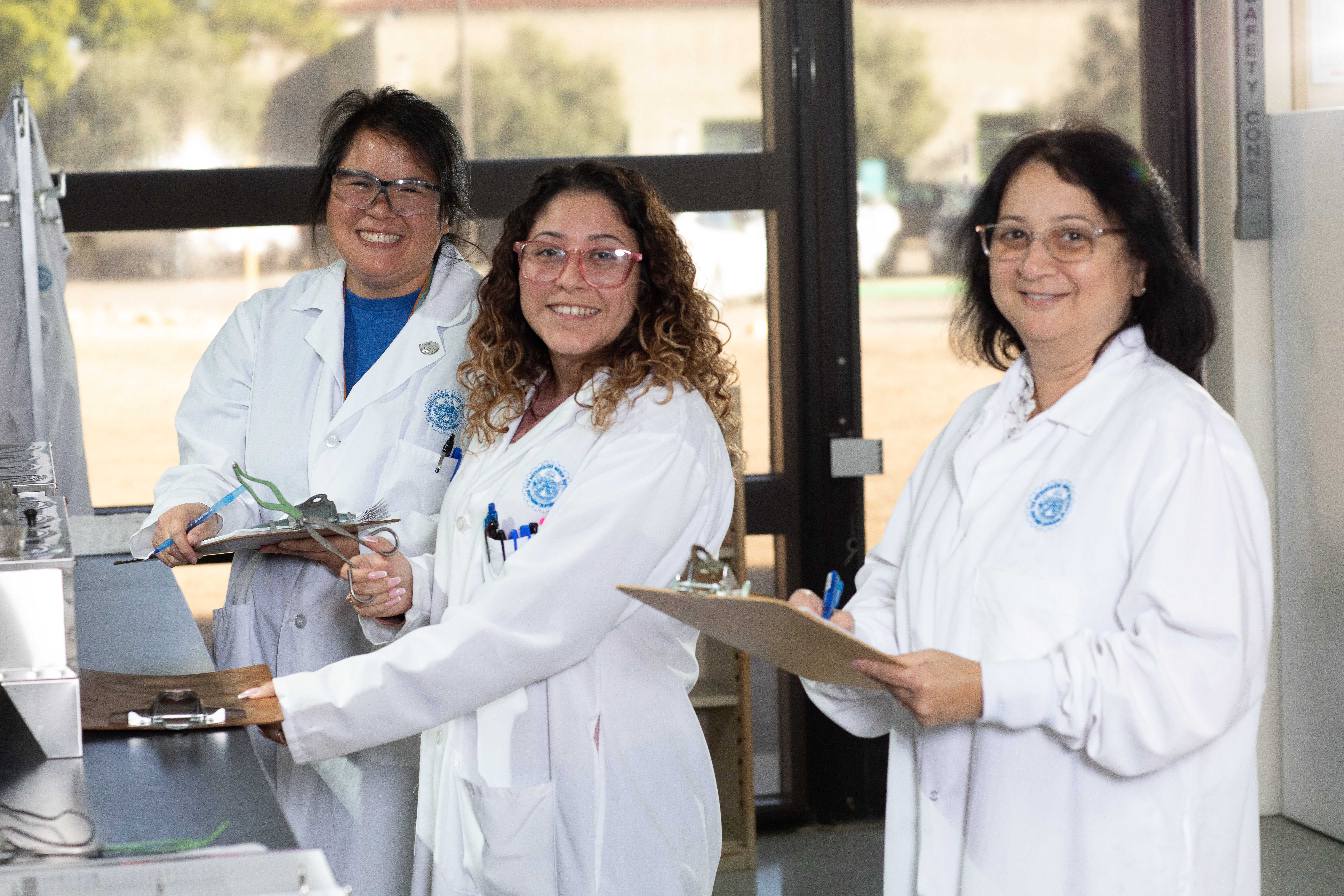Find a Document
Water Quality and Treatment

Celebrating
50 Years
Safeguarding the
Public's Drinking Water
For half a century, Metropolitan has helped safeguard drinking water for Southern California and developed innovations in research and technology that have impacted the drinking water industry globally. But even before the first deliveries of Colorado River Aqueduct water to Southern California in 1941, water quality was already a top-of-mind concern for planners. The then-named Water Quality and Research Branch was formed in 1974 in response to development of the federal Safe Drinking Water Act. But decades before, Metropolitan engineers and scientists were evaluating water treatment options and the role the agency would play in safeguarding water supplies for newly annexed member agencies and a growing population. Drinking water regulations in the United States evolved as the health impacts from contaminants found in drinking water became known and as analytical instruments to detect such contaminants were developed.
Through the Years
A photo journey covering the history of the Water Quality Laboratory from its earliest days to now.
Water Quality Control
Metropolitan tests our water for more than 120 regulated and about 280 unregulated constituents. Nearly 250,000 water quality tests are conducted on samples gathered from throughout our vast distribution system. We invest in the latest and most-advanced technology at our main Water Quality Laboratory in La Verne and ensure that the five satellite laboratories at each of our water treatment plants are equipped for all routine monitoring requirements.
Metropolitan’s water meets or surpasses all state and federal regulatory requirements.
We rely on the expertise of our highly skilled staff from disciplines across the sciences, many of whom are leaders in their fields of research and regulatory compliance. Over the last 40 years, Metropolitan has conducted or participated in over 85 projects with more than $25 million in external grant funding to conduct applied research on improved water treatment and disinfection, pathogen detection, disinfection byproducts and source water protection.

Community Water Fluoridation
Since 2007, Metropolitan has added fluoride to its water supplies to help prevent tooth decay among Southern California residents, as recommended by the U.S. Department of Health and Human Services and the Centers for Disease Control and Prevention.
Fluoride naturally occurs in the environment, including in rivers, lakes and groundwater. Metropolitan adjusts naturally occurring fluoride to the recommended level of 0.7 milligrams per liter (or parts per million), considered optimal by public health agencies. Fluoridation of drinking water is considered one of the greatest modern public health achievements by the CDC. Today, most of the 50 largest cities in the United States add fluoride to their drinking water to support oral health.
Drinking water standards, including those for fluoride, are set by state and federal regulators based on the best available science. Metropolitan supplies comply with those regulations.
For more information on fluoridation, read our fact sheet and Frequently Asked Questions.
Metropolitan
Regional Testing
Metropolitan’s service area is expansive. It spans parts of six counties and 5,200 square miles. Our closest routine sample location is less than a mile from the La Verne Water Quality Lab, with the furthest 250 miles away. Sample collectors travel more than 150,000 miles each year by car and plane to bring samples in for analysis. Staff rely on nearly 500 different types of analytical equipment and use about 150 methods to evaluate samples. In a given year, about 250,000 water quality test results are generated.
Our monitoring also relies on human senses. More than 40 years ago, Metropolitan introduced the idea of Flavor Profile Analysis for water. Since then, the practice has been adopted by drinking water agencies worldwide and is regarded as one of the most reliable early warning systems gauged by drinking water aesthetics. Metropolitan’s highly trained team meets several times a week to taste and smell samples from throughout our distribution system. This focus has resulted in many awards in international and regional water tasting competitions.


Water Quality Reporting
Metropolitan’s Water Quality Report is available on our website. The annual report provides information on the constituents in water that can affect your health, along with how it looks, smells and tastes. The report lists the maximum levels allowed by state and federal regulations, and the levels found at our five water treatment plants and throughout our distribution system. The report also includes contact information, along with health advisories for sensitive populations.
The Mechanics of Treating Water
Before water pours from a tap, chances are it passed through one of our five water treatment plants, which together can disinfect more than 2 billion gallons of water daily using a five-step treatment process. All of our facilities use ozone as the primary disinfectant. Ozone destroys a wide range of microorganisms and allows Metropolitan to keep pace with stringent federal regulations that limit the levels of drinking water disinfection byproducts in water. The results show historically low levels of disinfection byproducts systemwide. Ozone disinfection also provides increased protection from pathogens and improves the taste and smell of water.
Learn more about ozone disinfection here.

Treatment Steps
As water enters the treatment plant, the first step is disinfection and, depending on the source water quality, it may be necessary to add various chemicals to optimize this process. Water is disinfected using ozone primarily, which kills microorganisms, including pathogens such as viruses and protozoa like Cryptosporidium and Giardia.
As water flows through ozone contactors, hydrogen peroxide may be added for additional taste and odor control. If there are any interruptions in the ozone process, chlorine also can be used as a back-up disinfectant and is readily available.
The second step in the treatment process is coagulation, where chemical coagulants such as alum (aluminum sulfate) and polymer are injected into the water and blended rapidly using flash jet mixers.
The coagulants help particles stick together, making larger particles that are more easily removed. Water then flows into the mixing and settling basins, where large mechanical mixers or flocculators gently agitate the water.
The third step is flocculation where water further mixes with the coagulant chemicals added in the previous step, allowing time for larger suspended particles in the water to bind together and form “floc.”
Sedimentation is the fourth step. In this process, the floc particles, which are much heavier than the surrounding water, settle to the bottom of the basin, forming a layer of material that is later removed. In the fifth step of filtration, a filter aid removes particles from the settled water in the sedimentation basins.
Filters consist of layers of anthracite coal, sand and gravel filter media. As water passes, the filters remove smaller particles from the water as well as larger particles that did not settle during the sedimentation process.
Once the treatment process is completed, chlorine and ammonia are added to the water to form chloramines and maintain a disinfectant residual in the distribution system. This ensures water quality is maintained as supplies travel through the system. Caustic soda also is added as a corrosion control measure to adjust the pH level of the water and protect pipes and plumbing fixtures. And Fluoride is added to help prevent dental caries as recommended by the U.S. Department of Health and Human Services. Treated water is temporarily stored in finished water reservoirs and distributed to member agency connections.
Metropolitan's Treatment Plants

F.E. Weymouth Water Treatment Plant
The Mission-style Weymouth plant in La Verne began treating and delivering water in 1941. Today, it treats up to 520 million gallons of water per day and is home to Metropolitan’s world-renowned Water Quality Laboratory. The plant generally serves eastern Los Angeles County, the San Gabriel Valley and parts of Orange County. It is named for Frank E. Weymouth, the general manager who oversaw construction of the Colorado River Aqueduct (and died just weeks after its completion).
Robert B. Diemer Water Treatment Plant
The Diemer plant started operation in 1964 and treats as much as 520 million gallons per day. It is the only water treatment plant that generates electricity through a hydro-electric power plant, thanks to the 5.1-megawatt Yorba Linda Hydroelectric Power Plant. It is named for Robert B. Diemer, who built Metropolitan’s initial distribution system starting in 1934, and who became general manager from 1952 to 1961. The Diemer plant serves areas of Orange County and coastal Los Angeles.


Joseph Jensen Water Treatment Plant
Commissioned in 1971, the Jensen plant is the largest such facility west of the Mississippi River, with a capacity of 750 million gallons per day. Treated water from the plant helps supply the San Fernando Valley, Ventura County, West Los Angeles, Santa Monica and the Palos Verdes Peninsula. It is named for Joseph Jensen, Metropolitan’s longest serving board chair, serving from 1949 to 1974.
Robert A. Skinner Water Treatment Plant
The Skinner plant is located in the southwestern corner of Riverside County in the community of Winchester, south of Hemet. Dedicated in 1976, it provides up to 350 million gallons per day to Eastern and Western municipal water districts in Riverside County, and to the San Diego County Water Authority. The plant was named for Robert A. Skinner, an engineer who served as Metropolitan's General Manager from 1962 to 1967.


Henry J. Mills Water Treatment Plant
In 1978, the Mills plant in Riverside came online and treats up to 220 million gallons per day. The smallest of Metropolitan’s water treatment plants, it is named for Henry J. "Hank" Mills, who capped a 41-year Metropolitan career by becoming general manager in 1967 until his retirement in 1971. The Mills plant provides water to western Riverside County.
Supporting Innovation with Science
Metropolitan, in partnership with Los Angeles County Sanitation Districts, operates the recycling demonstration plant at the Grace F. Napolitano Pure Water Southern California Innovation Center. The demonstration facility in Carson is testing new treatment methods to produce a sustainable source of high-quality water for Southern California. In 2023, California approved new regulations that allow water systems to develop treatment protocols to convert wastewater into high-quality drinking water, a landmark step in ensuring a climate-resilient water supply.
The facility takes treated wastewater and purifies it using a three-step process involving membrane bioreactors, reverse osmosis, and UV light with advanced oxidation. An onsite lab allows engineers and scientists to test samples from each purification process for numerous water quality factors. These tests help monitor the effectiveness of each step in the process, optimize operations at the facility, and ensure the purified supplies meets water quality standards. Water samples are also are analyzed at Metropolitan’s Water Quality Laboratory, Los Angeles County Sanitation Districts’ laboratories, and contract laboratories.
Should the project move to full-scale after the demonstration phase of study, which has now entered an environmental review process, the purified wastewater would be delivered through 60 miles of new pipelines to the region's groundwater basins as well as for some local industrial use. A full-scale facility would produce up to 150 million gallons of water daily, enough to serve more than 500,000 homes. As the state develops regulations for direct potable reuse, the water could also potentially undergo additional treatment and be blended with Metropolitan supplies.
Responding to Water Quality Challenges & Concerns
PFAS (Per-and Polyfluoroalkyl Substances)
For decades, manufacturers have widely used chemicals known as PFAS in everyday industrial and household products such as firefighting foam, clothing, non-stick cookware, personal care products and paints. Known for their resistance to heat, oils, stains and water, these chemicals are a growing concern because of their possible health effects in high concentrations. Because they don’t easily break down, they’re often referred to as “forever chemicals.”
The family of PFAS includes more than 12,000 chemicals, some of which have been found in water supplies across the country. Since 2013, Metropolitan has monitored for PFAS, including the two most common and most studied PFAS – perfluorooctanoic acid (PFOA) and perfluorooctane sulfonate (PFOS). Metropolitan has infrequently detected four PFA substances at low concentrations just above the detection level, including one-time detecting very low levels of PFOS in a source water lake that we use infrequently. In March 2023, the U.S. Environmental Protection Agency announced proposed drinking water standards for six PFAS.
Metropolitan continues to ensure the region has a safe drinking water supply by voluntarily monitoring our source and treated waters for PFAS and supporting our member agencies as they assess whether PFOA and/or PFOS are present in their supplies. Metropolitan is prepared to handle any increased demands for imported water that may result from the loss of affected local supplies.
Below are resources aimed at helping the public understanding of PFAS: a fact sheet as well as a list of frequently asked questions and answers.
PFAS Resources
PFAS Questions Answered
Cyanotoxins
Cyanotoxins are produced from blooms of cyanobacteria — also known as blue-green algae — in lakes and reservoirs. In high concentrations, they can be harmful to humans and animals, especially when ingested. As cyanobacterial blooms may become more common with our changing climate, cyanotoxins are a growing concern locally and globally. They are not currently regulated, but state and federal regulators do recommend certain responses based on the amount of toxins being released by a bloom.
Metropolitan has an extensive cyanobacteria and algae monitoring program and has detected cyanotoxins in our source waters during significant bloom events. Continuously refining our methods for cyanotoxin monitoring and detection, Metropolitan is ready to comply with evolving regulations. In February 2021, California initiated the process for developing notification and response levels for four cyanotoxins.
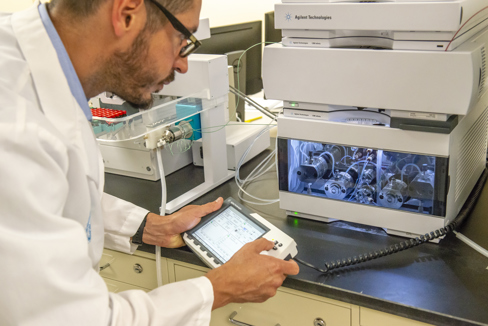
Source Water Protection
Protecting water quality starts at the source. This requires careful management of watersheds. Metropolitan imports water from two sources — the Colorado River through the Colorado River Aqueduct, which we own and operate, and Northern California via the State Water Project. Each source has its individual challenges from constituents that enter the water. Some are naturally produced from the environment, and others are sourced from cities and farms. Some constituents such as total organic carbon and bromide in source waters can potentially form harmful contaminants when in contact with disinfectants such as chlorine or ozone during the disinfection process. Certain industrial processes, like dry cleaning, fireworks and rocket fuel manufacturing, have left constituents in the environment. So has the use of certain fertilizers and pesticides. Many of these chemicals have since been banned from use. When these chemicals make their way into California’s water supplies, specialized treatment is required, or the supplies must be abandoned.
Metropolitan partners with state and local water agencies in supporting programs that protect water at its source and on its path to treatment. For example, we partner with Central Arizona Project and Southern Nevada Water Authority on initiatives to address water quality challenges on the Colorado River, including salinity, invasive species and industrial contaminants, as part of the Lower Colorado River Water Quality Partnership. Metropolitan also provides funding for projects to clean up groundwater contamination.
Managing Salinity
When Metropolitan first began delivering desalted Colorado River water to Southern California cities in 1941, the “softened” water was touted for its ability to reduce laundry suds. Today, salinity control remains a high priority. Colorado River water has the highest level of salinity of all of Metropolitan’s sources of supply (averaging approximately 625 mg/L since 1976). Metropolitan’s board in 1999 approved a Salinity Management Policy that set of goal of reaching salinity concentrations in delivered water of less than 500 mg/L when hydrological conditions allow.
One of the reasons the river is so salty is because many of the salts are indigenous and date to prehistoric marine environments that left deposits of saline sediments. Salts erode easily, dissolve and get transported in the river system. Metropolitan works with the Colorado River Basin Salinity Control Forum, an organization of the seven Colorado River Basin states of Arizona, California, Colorado, Nevada, New Mexico, Utah and Wyoming to coordinate ways to prevent salts from moving into the river system. Measures include better irrigation practices and rangeland management. Since the 1970s, the salt load has been reduced by 20 percent.
The start of State Water Project deliveries to Southern California in the 1970s gave Metropolitan an additional tool of blending less salty (250 to 325 mg/L) SWP supplies with Colorado River water. Like the Colorado River, SWP salinity can vary greatly depending on hydrologic conditions.
High salinity levels can also occur in groundwater (referred to as brackish water). The desalination of brackish groundwater and other local supplies enhances the continued supply reliability of the region by maximizing local groundwater resources. For this reason, since 1991 Metropolitan funding has helped recover a little more than 1 million acre-feet of groundwater, cleansing it of salts, metals, nitrates, viruses and bacteria and creating another source of water that lessens our dependence on imported supplies.
In addition to desalinating brackish groundwater, Metropolitan has explored the development of seawater desalination since the 1950s. Since 2014, we have offered financial incentives as part of the Local Resources Program.
Controlling Quagga Mussels
From the first discovery of quagga mussels in Lake Mead in January 2007 and their subsequent spread into parts of Metropolitan’s water system, the district has devoted countless hours and tens of millions of dollars toward containing and managing the invasive pest. Spread by commercial ships and inadequately cleaned and dried recreational boats, quagga and zebra mussels had already wreaked havoc in other parts of the country before arriving in the west.
The mussels rapidly reproduce, clogging pipes, water pumps and siphons, and growing on the walls of canals and other submerged infrastructure impeding flow. Soon after their discovery in Lake Mead, Metropolitan created a Quagga Mussel Control Plan.
Crews constructed continuous chlorination facilities at Copper Basin Reservoir, Lake Mathews and Lake Skinner, all of which take Colorado River water and, therefore, have quagga mussels. During Metropolitan’s yearly Colorado River Aqueduct shutdowns, Metropolitan crews dry up (desiccate) quagga mussels and remove them from the system, clean tunnels, and chlorinate strategic sites (sometimes using a mobile chlorinator). Divers perform underwater maintenance, stripping layers of quagga mussels from intake structures.
Routine inspections have demonstrated that the combined use of chlorine and regularly scheduled shutdowns effectively control mussel infestation along the length of the CRA and downstream systems.
We have been able to avoid infestation at our Diamond Valley Lake storage reservoir because CRA deliveries into the reservoir stopped prior to the arrival of quagga mussels in our CRA system in 2007. Our success also is due to a rigorous boater education and inspection campaign that enlists our Diamond Valley Lake marina operators to enforce launch requirements for visiting boats, and interview boaters to ensure requirements listed here have been followed. Recently, quagga mussels have been found in the State Water Project system at Pyramid and Castaic Lakes.
Highlighting Our
Talented Staff
Just who are the people behind-the-scenes at Metropolitan providing award-winning drinking water for our six counties? They are the ones who run thousands of tests every year using the latest and best technology at Metropolitan’s renowned Water Quality Laboratory in La Verne.

Scientist Seyoum Gebremariam relies on remote sensing technology to assess the extent and density of harmful cyanobacteria blooms in Metropolitan’s storage reservoirs. He is part of a team that developed an award-winning digital dashboard to monitor the blooms.

Chemist Nelyn Quitoviera uses advanced technology to analyze water for potential contaminants. Metropolitan’s modern instrumentation allows her to analyze water quickly to support timely reporting and operational decisions.
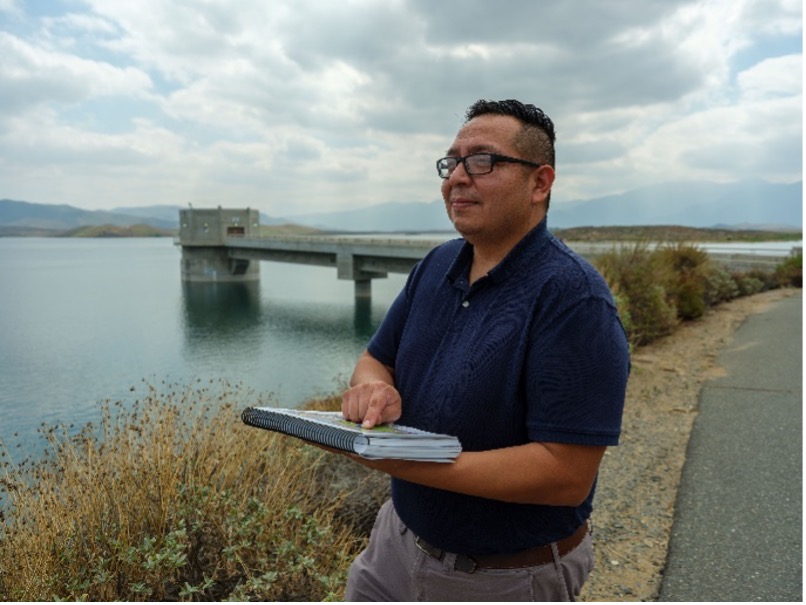
Engineer Mauricio Santos conducts surveys of the watersheds impacting Metropolitan’s source waters, including the Colorado River. He works on region-wide water quality issues to help protect Metropolitan’s water supplies.
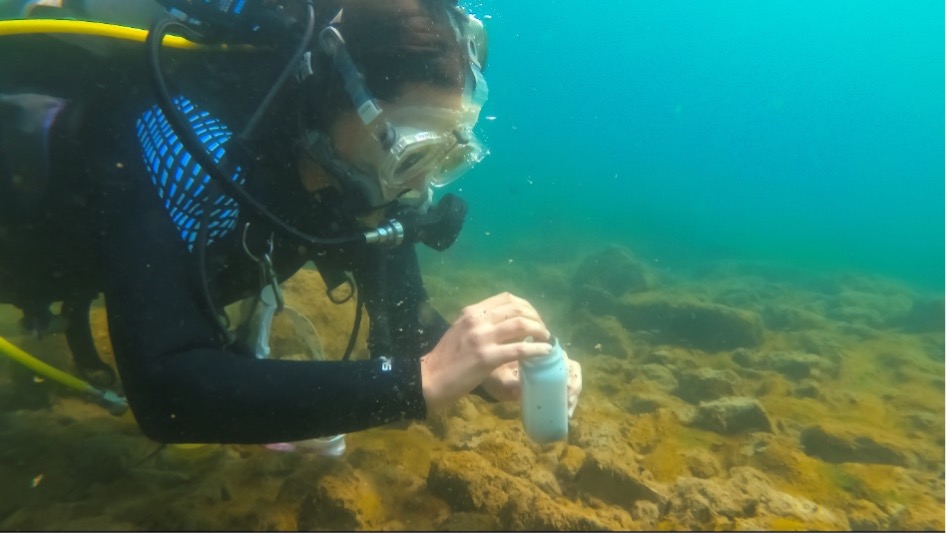
Assistant Limnologist Jennifer Massoll goes from land to water to analyze water samples and observe the environment in our reservoirs for algae or other organisms that could lead to water quality or operational concerns.
Partnership For Safe Drinking Water
A voluntary effort by six of the nation’s most prominent drinking water organizations, the Partnership for Safe Water offers tools that allow operators, managers and administrators to improve water quality beyond proposed regulatory levels.
Since Metropolitan joined the partnership in 1996, all of our water treatment plants and distribution system have received awards under the program. Our Diemer, Jensen and Weymouth plants have been honored for achieving the highest possible levels of individual filter turbidity performance, while Metropolitan’s treated water distribution system has achieved the highest level of optimization and demonstrated commitment to continuous improvement.
